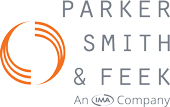Articles
CMS Extends the Deadline to Report Membership Data for the Transitional Reinsurance Contribution
Monday, November 17, 2014
On Friday November 14th the Department of Health and Human Services’ Centers for Medicare & Medicaid Services (CMS) announced an extension of the deadline for submission of plan membership data for the transitional reinsurance program (TRP). Employer/plan sponsors of self-funded plans were originally required to report membership by November 17th, 2014, but the filing deadline has now been extended to December 5th, 2014.
Supreme Court to Hear ACA Case
Thursday, November 13, 2014
On Friday Nov. 7th the Supreme Court announced they plan to consider challenges to the government’s policy of providing subsidies to individuals who purchase health insurance through Healthcare.gov, the federally run Marketplace. The case will be heard early in 2015, with a decision likely at the end of the Court’s term early in the summer of 2015.
Background
Employer Can Not Pay for Employee’s Individual Health Insurance
Tuesday, November 11, 2014
In the most direct guidance released to date, the DOL has issued new FAQs that make it clear employers are not permitted to pay for the cost of individual health insurance for employees, even if the payments are made on an after-tax basis.
IRS Announces 2015 Adjustments for Certain Benefit Items
Monday, November 10, 2014
In Revenue Procedure 2014-61, the IRS set forth a variety of 2015 adjusted tax limits. Among other things, the notice addresses benefits related limits for health flexible spending accounts (FSAs), adoption assistance, and qualified transportation benefits.
Health Plan ID (HPID) Requirement Delayed
Tuesday, November 4, 2014
On October 31st the Centers for Medicare and Medicaid Services (CMS) announced an indefinite delay in the Health Plans ID (HPID) requirements applicable to self-funded employer sponsored health plans. Officially described as an enforcement delay, the announcement means that large self-funded employers will not be required to obtain an HPID by November 5th, 2014 as originally required. No further information regarding a new deadline, or other changes to the HPID requirements, was contained in the announcement.
Transitional Reinsurance Contribution Form to be available Oct 24 for Self-Funded Medical
Thursday, October 23, 2014
As announced earlier, the first submission of membership numbers to the Department of Health and Human Services (HHS) for purposes of the transitional reinsurance fee is due by November 15th of this year.
Transitional Reinsurance Contribution Form to be available Oct 24th
Wednesday, October 22, 2014
As announced earlier, the first submission of membership numbers to the Department of Health and Human Services (HHS) for purposes of the transitional reinsurance fee is due by November 15th of this year.
Risk Management Implications for the Ebola Virus
Thursday, October 16, 2014
By: Ed Rhone, Principal, Claims Manager
The headlines are full of the latest developments on the spread of the Ebola virus. As of the date of this article, two healthcare workers have been infected at a Dallas hospital. Our clients have inquired as to the potential insurance impact and risk control measures they should take in light of this emergent threat.
Self-funded Employers Must Report Membership by Nov. 17th for Purposes of Making ACA Reinsurance Payments
Wednesday, October 15, 2014
Employers who sponsor self-funded health plans must report their average membership numbers to the Department of Health and Human Services (HHS) no later than Nov. 17th. The reported membership will be used to calculate the amount due for 2014 contributions to the transitional reinsurance program. Employers will also need to schedule the first payment at the time the membership is reported. The first reinsurance contribution payment must be made no later than January 15, 2015.
Time is Running Short for Large Self-funded Employers to Obtain a HIPAA HPID Number
Friday, October 10, 2014
Time is running short for large self-funded employers to acquire a Health Plan ID Number (HPID) as required by HIPAA and the ACA. Employers who sponsor large health plans must obtain at least one Health Plan ID Number (HPID) by November 5th, 2014.
Final Rules Amending Definition of Excepted Benefits
Wednesday, October 8, 2014
The Departments of the Treasury, Labor, and HHS (the Departments) have released final rules that amend regulations regarding the definition of “ excepted benefits”.
Procuring Developer-Oriented Surety Bonds
Tuesday, October 7, 2014
At a recent construction industry event, a developer asked me why surety bonds have become so much harder for him to procure than in the past. The bonds he was referring to are bonds for things such as erosion control, storm water & drainage, grading & clearing, wetlands mitigation, landscaping and right of way, among others. He knew that reputation, work history and financial position all influenced qualification for surety bonds. But beyond qualifying one’s character, capacity and capital – three key components used in the surety qualification process – perhaps the biggest X factor is the number of surety markets willing to entertain developer-oriented surety.

